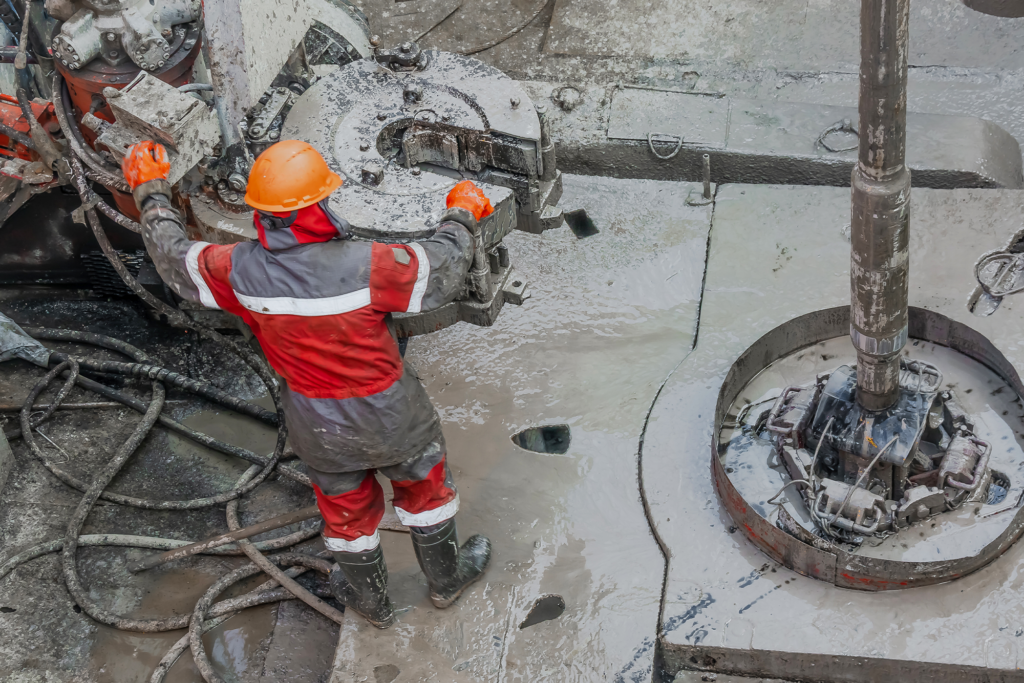Potential Exposures During Flowback Operations

Although worker safety hazards in the oil and gas extraction industry are well-known, there is very little published data regarding occupational health hazards—such as the types and magnitude of risks for chemical exposures—during oil and gas extraction operations.
Flowback refers to process fluids from the wellbore that return to the surface and are collected after hydraulic fracturing is completed. In addition to the hydraulic fracturing fluids that were originally pumped, returned fluids contain volatile hydrocarbons from the formation. After separation, flowback fluids are typically stored temporarily in tanks or surface impoundments (lined pits or ponds) at the well site. Liquid hydrocarbons from the separation process are routed to production tanks. Workers periodically gauge the fluid levels in flowback and production tanks with hand-held gauges through access hatches located on the top of the tank.
Worker Fatalities
According to the National Institute for Occupational Safety and Health (NIOSH), at least four workers have died since 2010 from what appears to be acute chemical exposures during flowback operations at well sites in the Williston Basin in parts of North Dakota and Montana. While not all of these investigations are complete, available information suggests that these cases involved workers who were gauging flowback or production tanks or who were involved in transferring flowback fluids at the well site. Often these fatalities occurred when the workers were performing their duties alone.
Potential Exposures
Hydrogen sulfide (sour gas) is widely recognized as a toxic exposure hazard associated with oil and gas extraction and production. However, less-recognized by many employers and workers are the risks associated with volatile hydrocarbons—many of the chemicals found in them are acutely toxic at high concentrations. Volatile hydrocarbons can affect the eyes, lungs and the nervous system, and at high concentrations they may also affect the heart, causing abnormal rhythms. Recently, NIOSH conducted exposure assessments to identify chemical hazards workers face when involved in flowback operations. Results from initial field studies suggest that certain flowback operations or activities can result in elevated concentrations of volatile hydrocarbons in the work environment that could be acute exposure hazards.
Recommendations to Improve Safety
Based on the limited information on fatalities and initial exposure assessments, NIOSH has several recommendations to reduce the potential for occupational exposures:
Develop alternative tank gauging procedures so workers do not have to routinely open hatches on the tops of the tanks and manually gauge the level of liquid.
Provide hazard awareness training to ensure flowback technicians, water haulers and drivers understand the potential hazards and risks for volatile chemical exposures when working on and around flowback and production tanks.
Monitor workers to determine their exposure to volatile hydrocarbons and other contaminants. Every employer should consult with an occupational safety and health professional trained in industrial hygiene to ensure an appropriate sampling strategy is used.
Ensure workers do not work alone in potentially hazardous areas.
Use appropriate respiratory protection in areas where potentially high concentrations of volatile hydrocarbons are present as an interim measure until engineering controls are implemented. Every employer should consult with an occupational safety and health professional trained in industrial hygiene to determine the appropriate respirator to be used. Note that OSHA regulations (29 CFR 1910.134) require that a comprehensive respiratory protection program be established when respirators are used in the workplace. NIOSH guidance for selecting respirators can be found at cdc.gov/niosh/docs/2005-100/default.html.
Establish emergency procedures to provide an appropriate medical response in the event of an incident.
Contact INSURICA today to learn more about your oil and gas coverage options.
This is not intended to be exhaustive nor should any discussion or opinions be construed as legal advice. Readers should contact legal counsel or an insurance professional for appropriate advice. © 2024 Zywave, Inc. All rights reserved.







